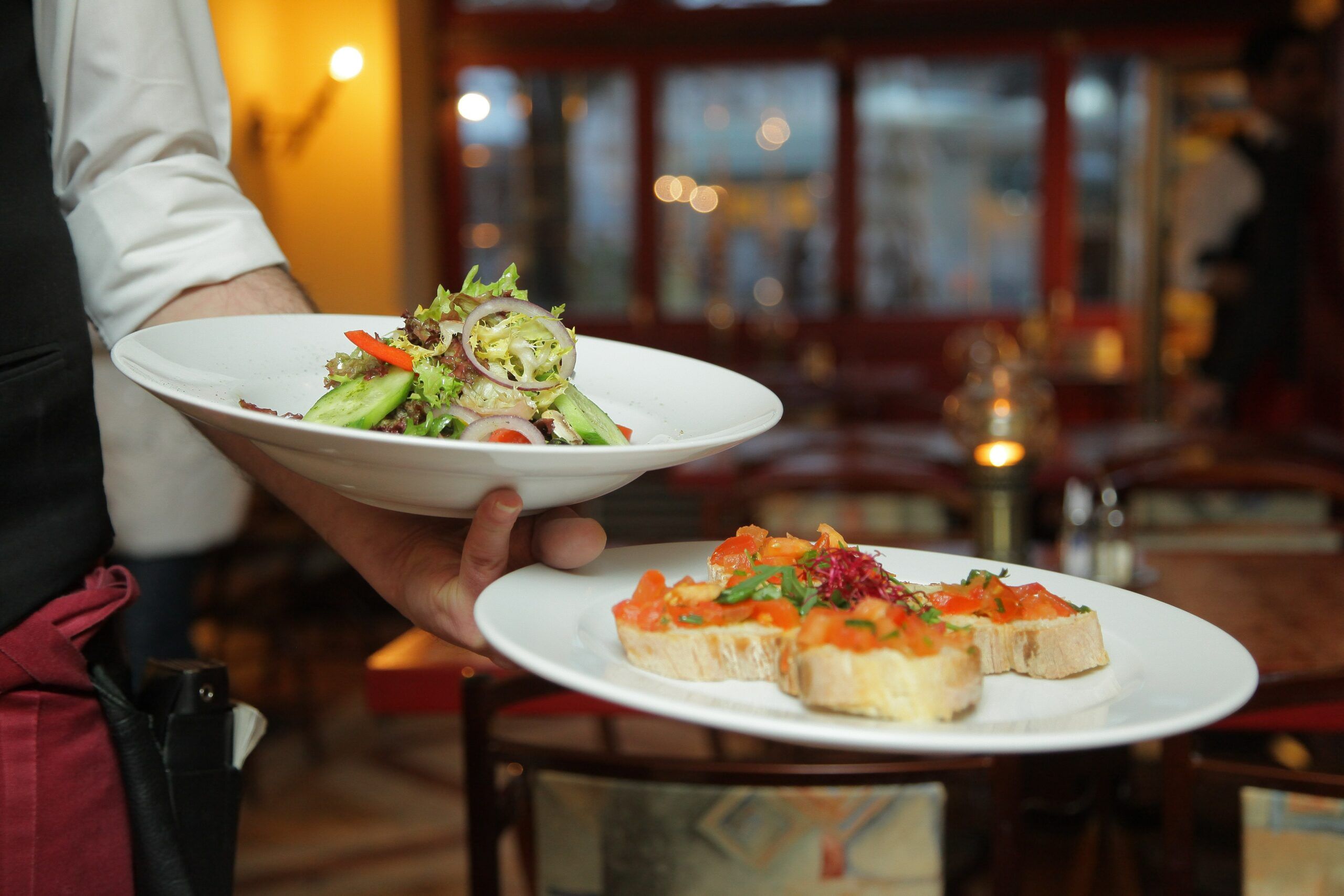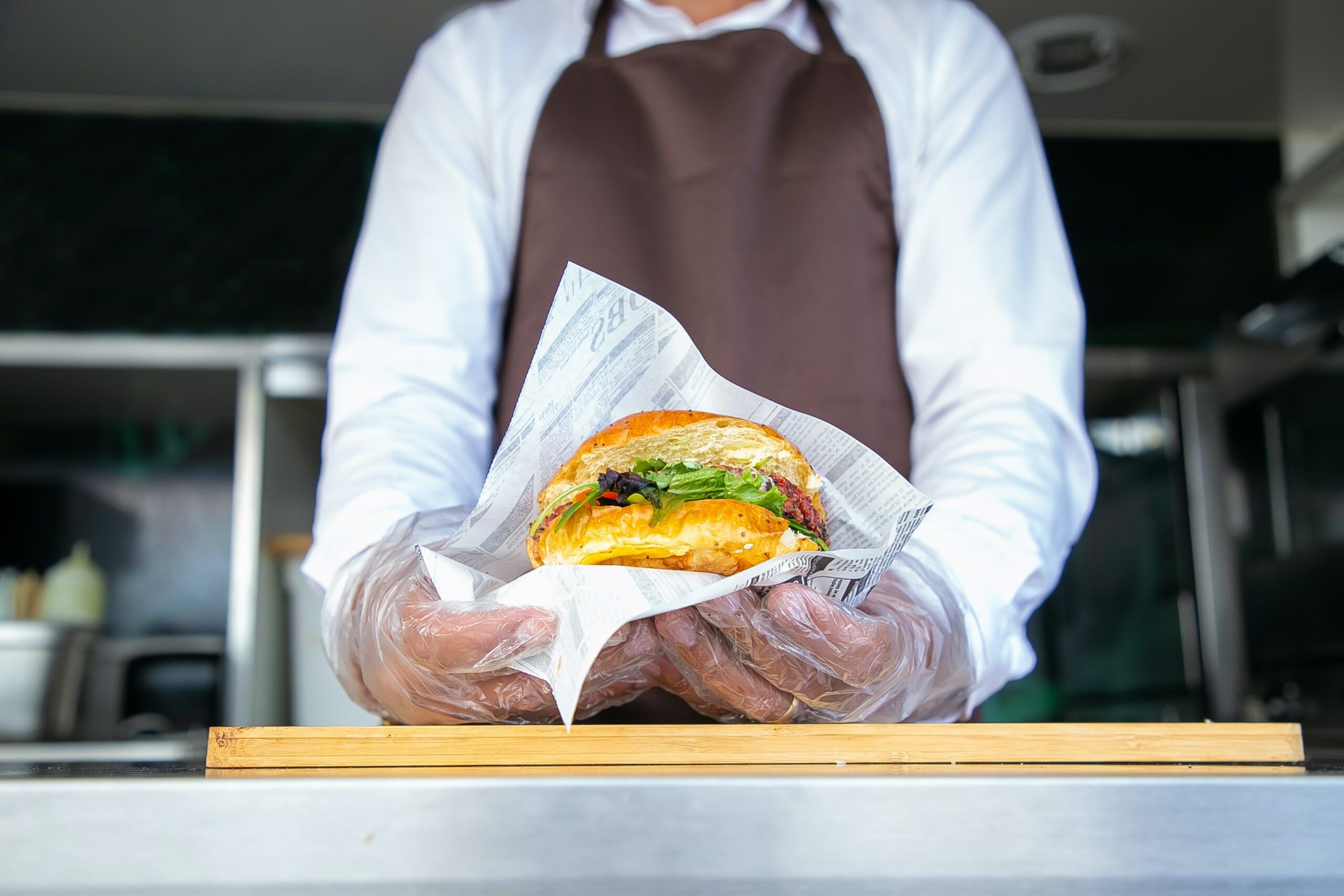- Offer a discount for customers who order takeout.
- Start a loyalty program to reward regular customers.
- Consider Food Trucks
- Price your menu items competitively and adjust them as needed
- Invest in new technology, such as online ordering or payment systems
Every business is looking for ways to boost profits in today’s economy. For restaurants, this can be a challenge. With rising food and labor costs and increased competition, it is essential to find creative ways to increase revenue.
Your restaurant profit margins are only as good as the system you have in place. You must develop processes and procedures to increase efficiency and streamline operations from the kitchen to the dining room.
It can boost restaurant profits with simple adjustments and new strategies. When it comes to the bottom line, here are some tips and tricks to help increase revenue. Keep reading to learn more.
Offer a discount for customers who order takeout.
Takeout is a great way to get people in the door (or drive-thru), but it’s also a fantastic way to increase profits. Offering a discount for customers who order takeout can help boost your bottom line in a big way. Here are four reasons why:
1. Takeout orders tend to be larger than dine-in orders, which means more revenue for your restaurant.
2. Discounted takeout orders can lead to increased repeat business. Customers who find your food a good value are likelier to come back again and again.
3. Takeout orders are typically made to feed multiple people, which means you’re more likely to make a sale on items like appetizers and desserts that might otherwise go unordered.
4. Offering a discount on takeout orders can help you attract new customers who may not have considered your restaurant before. In today’s competitive market, every little bit helps!
A few things to consider when offering a discount for takeout orders.
Make sure that the discount is significant enough to attract customers.
Make sure that the discount only eats into your profits a little.
Make sure that the discount is easy to redeem.
Make sure that the discount is widely publicized so that people know it.
The profit margins on takeout orders are usually higher than that of dine-in orders, so offering a discount can significantly increase revenue while maintaining your profit margins.
Following these tips can offer a discount for takeout orders that will boost your restaurant’s profits.
Start a loyalty program to reward regular customers.
There’s no doubt that loyalty programs can be a significant boost to your restaurant’s bottom line. Not only do they help to retain existing customers, but they also attract new business.
Your restaurant’s profit margins will depend on your ability to attract new customers while keeping current ones happy. Loyalty programs can help with both of these goals.
Your labor costs and overhead are fixed, so the more customers you can attract without increasing your expenses, your profits will be greater.
However, designing an effective loyalty program can take time and effort. Here are some helpful tips to get you started:
Think about what you want to achieve with your loyalty program.
Do you want to increase customer visits? Does it boost average spending? Encourage customers to try new menu items. Once you have a clear goal in mind, you can start designing a program to help you achieve it.
Consider what type of loyalty program will work best for your restaurant.
A points-based system may be ideal if you’re looking to increase customer spending, while a visit-based system could work well if you’re trying to encourage more repeat visits. There’s no right or wrong answer here – it depends on your specific goals.
Ensure your loyalty program is easy to use and understand.
The last thing you want is for customers to sign up and forget about it because it’s too complicated. Keep things simple, and make sure it’s clear how customers can redeem their rewards.
With creativity and hard work, a loyalty program can significantly increase restaurant profits and keep customers returning.
Consider Food Trucks
Food trucks are becoming increasingly popular, and they can be a great way to increase profits for your restaurant.
They’re relatively inexpensive compared to traditional dining establishments, and you can use them to bring your food directly to customers in locations that may not otherwise have access to it.
This can help you expand your customer base while also increasing revenue. Food trucks also offer a unique experience that many customers may find attractive.
When starting a food truck, there are several things to consider.
- First, you need to take into account the cost of equipment and supplies.
- You’ll also have to consider costs associated with permits, insurance, and staff.
- Determine where you’re going to operate your food truck.
- You may want to focus on events, festivals, or other high-traffic areas.
- Decide on what type of food you’re going to offer and determine how much you can charge for it.
Food trucks can be a great way to increase profits for your restaurant, but they require careful planning and consideration.
By taking the time to think through all the details, you’ll be able to maximize your profits and ensure a successful food truck business.
Price your menu items competitively and adjust them as needed
As all restaurant owners know, pricing your menu items is a delicate balancing act. Charge too little, and you’ll struggle to make a profit; charge too much, and you’ll scare away customers.
But get your pricing right, and you could be in for a windfall of profits. Here are some tips for pricing your menu items competitively:
Know your food costs.
This is the first and most crucial step in pricing your menu items competitively. You need to know how much it costs to make each dish, including ingredients, labor, and overhead. Once you know your food costs, you can price your menu items accordingly.
Research your competition.
Knowing what your competition charges for similar menu items are essential. This will give you a good idea of what customers are willing to pay in your area.
Use a menu engineering tool.
Many online menu engineering tools can help you price your menu items competitively. These tools consider food costs, customer preferences, and restaurant profitability.
Offer discounts and promotions.
One way to boost profits is to offer discounts and promotions on specific menu items. For example, you could offer a discount on a popular dish during slow periods or advertise a new dish you’re trying to promote.
Adjust your prices regularly.
It’s important to adjust your prices to stay competitive and boost your sales volume.
Prices should be reviewed at least once per month, but more often if possible. The average restaurant’s profit margin is small, so even a small price change can make a big difference to your bottom line.
Your Inbox, Your Rules!
Tailor your newsletter with the topics you're most interested in.
Consider portion sizes.
Portion sizes can greatly impact profits, so it’s essential to consider them when pricing your menu items. If you’re selling smaller portions, you can charge less per item while still making a profit.
Use value-based pricing.
Value-based pricing is a pricing strategy where you charge based on the perceived value of the dish rather than the cost of ingredients or labor. For example, if you have a unique or made with high-quality ingredients, you can charge more for it than a similar, more common dish.
Use psychological pricing.
Psychological pricing is a pricing strategy where you use specific prices designed to influence customer behavior. For example, prices ending in .99 are often used to make products seem more affordable.
The average restaurant profit margin is small, so it’s important to use every tool you can to maximize profits.
Tip: Understand the difference between gross profit margin and average profit margin
Gross profit margin is the ratio of gross profits to total revenues. It is calculated by subtracting the cost of goods sold from total revenue and then dividing it by total revenue.
The average profit margin is the ratio of net income to total revenues. This is calculated by subtracting all expenses, including the cost of goods sold, from total revenue and then dividing by total revenues.
Gross profit margin is a more immediate measure of profitability since it looks at how much the company is making on each sale.
Average profit margin looks at overall profitability and gives an indication of how efficient a business is over time.
Offer combo deals.
Combo deals are an effective way to increase profits by selling multiple items at once. For example, if you’re selling burgers, you could offer a combo deal that includes a burger, fries, and a drink for one price. The net profit margin on combo deals tends to be higher than on individual items, so it’s a great way to boost profits.
Implement dynamic pricing.
Dynamic pricing is a pricing strategy that constantly updates prices based on demand. For example, if there’s high demand for a certain dish, the price could be increased to maximize profits.
Invest in new technology, such as online ordering or payment systems
As the restaurant industry continues to grow, so does the competition. To attract customers and stay ahead of the curve, it is essential to invest in new technology.
Online ordering and payment systems are great examples of how technology can boost your bottom line. Here’s a closer look at how these new technologies can help your restaurant thrive:
Online Ordering: Customers today expect to be able to order their food online. Investing in an online ordering system will make it easy and convenient for customers to place their orders.
This will lead to more sales, as well as repeat business. In addition, online ordering systems can help you keep track of customer preferences and trends. This information can be used to improve your menu and make decisions about promotions and marketing campaigns.
Orders.co offers you an all-in-one-place platform to manage your restaurant’s operations quickly and efficiently. You can streamline your menu, manage orders, get real-time insights, and make it easier for your customers to order online.
Payment Systems: Another way to use technology to boost your profits is by investing in a new payment system. Contactless payments, such as Apple Pay or Android Pay, are becoming increasingly popular.
Accepting these forms of payment will make it easy for customers to pay for their orders. This will lead to more sales and higher profits. In addition, you’ll be able to take advantage of cashless tips, which can add even more money to your bottom line.
By investing in new technology, you’ll be able to increase your sales and profits. So don’t wait – start looking into online ordering and payment systems today!
The Secret to Increasing Your Restaurant’s Bottom Line
The full-service restaurant business is a tough one. To be successful, you need to have a good product, efficient operations, and a solid marketing strategy. However, one secret can help you increase your bottom line: customer loyalty.
If you can focus on building loyalty among your current customers, you’ll see a significant financial return. There are many ways to build customer loyalty. Still, some of the most effective include offering rewards programs, providing exceptional customer service, and making it easy for customers to connect with you online.
You’ll see a dramatic increase in your bottom line by implementing even just a few of these strategies. And that’s the secret to success in the restaurant business.
Your profit margin can be the difference between success and failure. By implementing the strategies outlined above, you can optimize your profit margin and ensure that your restaurant is a success. Good luck!



